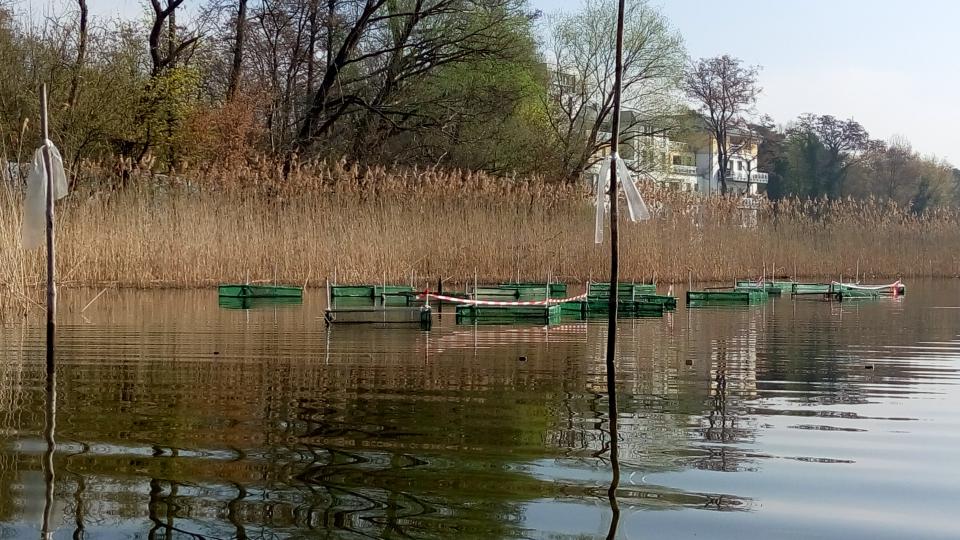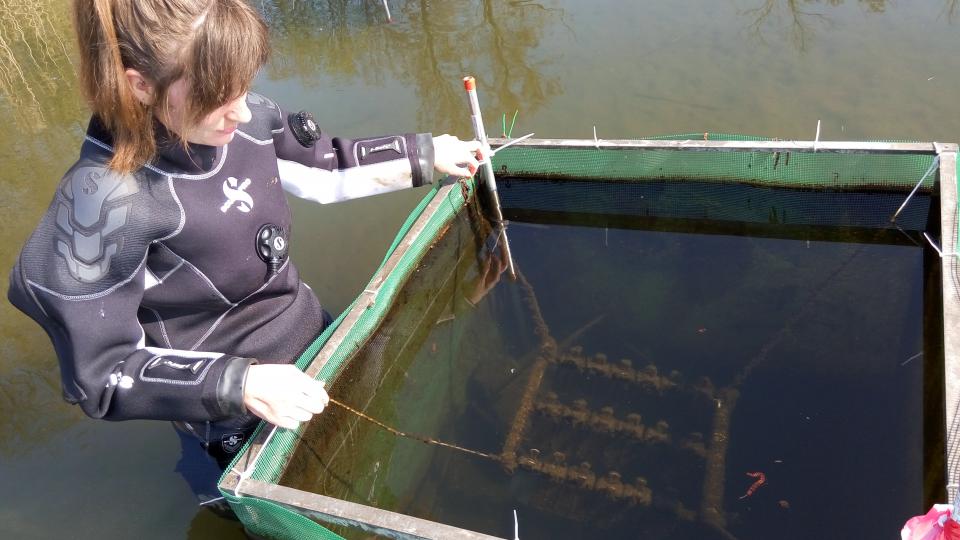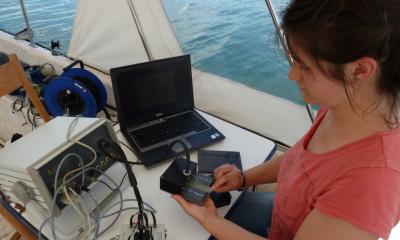Periphyton
Short profile
Duration

Periphyton on artificial substrates in Lake Müggelsee 2016
Background
Submerged macrophytes stabilize the clear water regime in shallow lakes, but were often completely lost during eutrophication resulting in a shift to the turbid, phytoplankton-dominated regime. Re-colonization of submerged macrophytes often failed after re-oligotrophication of shallow lakes despite an increased light availability in spring. Shading by periphyton is supposed to be one of the reasons. Periphyton biomass in eutrophic lakes has been suggested to be potentially controlled by a cascading effect of fish predation on periphyton-grazing invertebrates. Direct experimental evidence of this top-down control of periphyton and its relevance for submerged macrophyte re-colonization, however, is still lacking.
Aim
We plan a combination of field experiments and modeling to unravel the role of periphyton shading for the development of submerged macrophytes as a base for sustainable management of shallow eutrophic lakes.
The focus is on in situ evidence of top-down control of periphyton by a fish-invertebrates-cascade and the impact of timing of the clear water phase and tuber sprouting in spring for a mismatch between periphyton and macrophyte growth.
Exclosures in Lake Müggelsee

Exclosures in Lake Müggelsee

Artificial substrates in exclosures in Lake Müggelsee
German Research Foundation (DFG)


